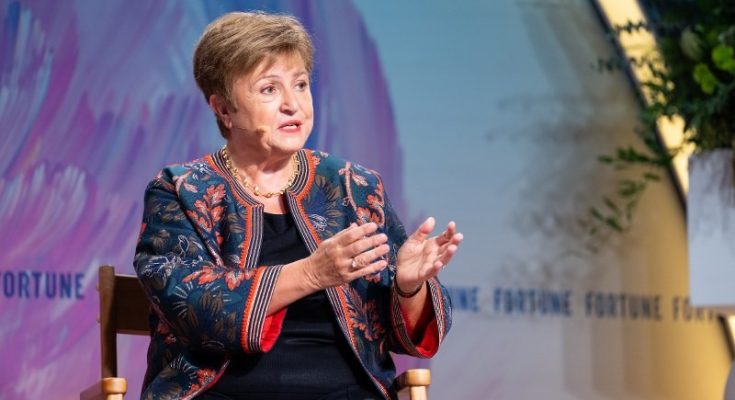#IMF# Kristalina Georgieva# India reforms# digital economy# Trump tariffs# GST# Aadhaar# RBI GDP projection
Washington, DC/IBNS-CMEDIA: At a time when global markets are on edge due to US President Donald Trump’s tariff escalations, IMF Managing Director Kristalina Georgieva has expressed strong confidence in India’s economic resilience, saying she is “very big” on the country for its bold structural and digital reforms.
“I’m very big on India because of the boldness of their reforms. For example, everyone told India that digital identity on a mass scale could not be done… but India proved them wrong,” Georgieva said on Monday, during the first day of the IMF’s bi-annual meeting of finance ministers and central bank governors.
Georgieva lauded India’s sweeping economic and structural changes, citing reforms in tax legislation, the expansion of digital payment systems, and the implementation of Aadhaar as transformative examples.
She also pointed to the major GST restructuring in September as part of India’s ongoing efforts to modernise its economy.
Her comments build on her earlier statement last week, in which she described India as a “key growth engine” in the global post-pandemic recovery.
“Global growth is forecast at roughly 3 per cent over the medium term — down from 3.7 per cent pre-pandemic. Global growth patterns have been changing over the years, notably with China decelerating steadily while India develops into a key growth engine,” she said.
The IMF chief identified four key elements contributing to economic stability worldwide — stronger policy frameworks, business flexibility, softer-than-expected tariff effects, and a favourable financial climate. On trade, she warned that the full impact of Trump’s tariffs is yet to unfold.
“In the US, margin compression could give way to more price passthrough, raising inflation with implications for monetary policy and growth. Elsewhere, a flood of goods previously destined for the US market could trigger a second round of tariff hikes,” Georgieva cautioned.
India, the world’s fastest-growing major economy, is projected by the IMF to overtake Japan and become the fourth-largest economy in nominal GDP terms by the end of this fiscal year — and the third-largest after the US and China in the coming years, surpassing Germany.
Although India faces headwinds from Washington’s 50% tariffs on its exports, economists say the country’s growth is largely powered by domestic demand, limiting the impact on GDP.
The Reserve Bank of India, in its latest monetary policy statement, said: “The implementation of several growth-inducing structural reforms, including streamlining of GST, are expected to offset some of the adverse effects of the external headwinds.
“Taking all these factors into account, real GDP growth for 2025–26 is now projected at 6.8 per cent, with Q2 at 7.0 per cent, Q3 at 6.4 per cent, and Q4 at 6.2 per cent. Real GDP growth for Q1:2026–27 is projected at 6.4 per cent. The risks are evenly balanced.”





